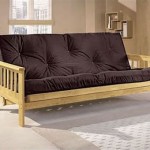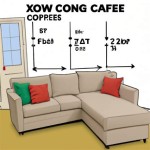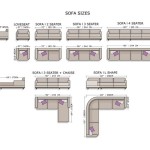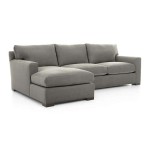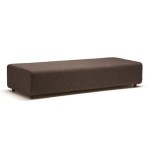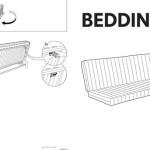The Enduring Appeal of Leather and Fabric Sofa Mixes
The combination of leather and fabric in sofa design represents a sophisticated and versatile approach to interior decor. This mixed-material aesthetic offers a balance of luxury, comfort, and practicality, making it a popular choice for homeowners seeking a stylish yet functional seating solution. The strategic blending of these two materials allows for a range of design possibilities, accommodating diverse tastes and home environments.
Leather, often associated with durability and elegance, provides a sense of timelessness and richness. Its smooth texture and natural variations in color and grain contribute to a unique and distinguished look. Fabric, on the other hand, brings a softer, more tactile element to the sofa. It introduces opportunities for incorporating patterns, textures, and a wider spectrum of colors, enabling homeowners to personalize their living spaces. The juxtaposition of these contrasting materials creates visual interest and depth, elevating the overall aesthetic of the room.
The decision to incorporate a leather and fabric sofa mix involves careful consideration of several factors, including lifestyle, existing decor, and personal preferences. The selection of specific leather types and fabric compositions plays a crucial role in determining the sofa's longevity, comfort level, and overall appearance. Understanding the characteristics of each material is essential for making an informed choice that aligns with individual needs and expectations.
Beyond the aesthetic appeal, the practical benefits of a leather and fabric combination are significant. Leather is known for its resistance to spills and stains, making it a practical choice for high-traffic areas or households with children and pets. Fabric, when treated with protective coatings, can also offer a degree of stain resistance and durability. The combination of these attributes results in a sofa that is both beautiful and relatively easy to maintain.
Understanding the Benefits of Leather Accents
One common approach to leather and fabric sofa design involves using leather as an accent material. This typically entails incorporating leather on the sofa's frame, arms, or base, while utilizing fabric for the cushions and backrests. This strategy allows homeowners to enjoy the luxurious feel and durability of leather without overwhelming the space. Leather accents can provide a sense of structure and sophistication, while the fabric cushions offer a comfortable and inviting seating experience.
The choice of leather for accents can also contribute to the sofa's longevity. Leather's inherent resistance to wear and tear makes it an ideal material for areas that are frequently touched or subjected to friction. By using leather on the high-contact points of the sofa, manufacturers can enhance its overall durability and extend its lifespan. This makes a leather-accented sofa a worthwhile investment for those seeking a long-lasting and stylish seating solution.
Furthermore, leather accents can be used to create a visual focal point in the room. The rich texture and color of leather can draw the eye and add a touch of elegance to the space. When paired with carefully chosen fabric, leather accents can help to balance the overall aesthetic and create a harmonious and inviting atmosphere. The combination of these elements can elevate the design of the entire room and create a sense of sophistication and style.
The use of leather accents also provides an opportunity to experiment with different textures and materials. Smooth leather can be contrasted with textured fabrics, such as linen or velvet, to create a unique and visually appealing design. This interplay of textures adds depth and interest to the sofa, making it a standout piece in the room. The possibilities for experimentation are endless, allowing homeowners to create a truly personalized and distinctive seating solution.
The Advantages of Fabric Upholstery with Leather Detailing
Conversely, many designs feature predominantly fabric upholstery with leather detailing. This approach prioritizes the comfort and versatility of fabric while incorporating leather as a subtle yet impactful design element. Leather detailing can be used to highlight specific features of the sofa, such as the seams, welting, or button tufting. This adds a touch of sophistication and visual interest without overpowering the overall design.
Choosing fabric as the primary upholstery material allows for a wider range of color and pattern options. This enables homeowners to easily coordinate the sofa with their existing decor and create a cohesive and personalized living space. Fabric also tends to be more breathable than leather, providing a more comfortable seating experience in warmer climates. The combination of comfort and versatility makes a fabric-upholstered sofa with leather detailing a practical and stylish choice for many homeowners.
Leather detailing can also serve as a subtle reminder of the quality and craftsmanship of the sofa. The meticulous attention to detail in the leatherwork demonstrates a commitment to excellence and adds a touch of luxury to the overall design. This subtle elegance can elevate the aesthetic of the room and create a sense of sophistication and refinement. The careful placement of leather detailing can transform a simple fabric sofa into a statement piece that reflects the homeowner's discerning taste.
The use of fabric upholstery with leather detailing also allows for a greater degree of customization. Homeowners can choose from a wide variety of fabrics, ranging from durable synthetics to luxurious natural fibers, to create a sofa that perfectly suits their needs and preferences. The leather detailing can then be tailored to complement the chosen fabric, creating a cohesive and visually appealing design. This level of customization ensures that the sofa is not only stylish but also perfectly suited to the homeowner's lifestyle and aesthetic preferences.
Considerations for Material Selection and Maintenance
The selection of specific leather and fabric types is paramount to the overall success of a leather and fabric sofa mix. Different types of leather vary in terms of texture, durability, and maintenance requirements. Full-grain leather, for example, is known for its exceptional durability and natural beauty, while top-grain leather offers a more uniform appearance and is often more affordable. Similarly, fabric options range from durable synthetics like microfiber to luxurious natural fibers like linen and velvet. Each material has its own unique characteristics and requires specific care to maintain its appearance and longevity.
The durability of the chosen materials is a crucial factor, especially in households with children or pets. Fabrics that are stain-resistant and easy to clean are often the best choice for high-traffic areas. Leather, while generally durable, can be susceptible to scratches and stains if not properly cared for. Regular cleaning and conditioning are essential for maintaining the appearance and longevity of leather upholstery. Choosing materials that are well-suited to the intended use of the sofa will ensure that it remains beautiful and functional for years to come.
Maintenance requirements should also be carefully considered. Some fabrics require professional cleaning, while others can be easily cleaned at home with simple detergents. Leather requires regular conditioning to prevent it from drying out and cracking. Understanding the specific maintenance needs of each material is essential for ensuring that the sofa remains in good condition. Choosing materials that are relatively easy to maintain will save time and effort in the long run.
Finally, the environmental impact of the chosen materials should be taken into consideration. Leather production can have a significant environmental footprint, so choosing sustainably sourced leather is an important step. Similarly, some fabrics are made from recycled materials or are produced using environmentally friendly processes. Choosing materials that are environmentally responsible can help to reduce the impact of the sofa on the planet. By considering the environmental impact of the chosen materials, homeowners can make a more sustainable and responsible choice.
In conclusion, the successful integration of leather and fabric in sofa design demands a careful balance of aesthetic considerations, practical needs, and material knowledge. By understanding the characteristics of each material and considering the factors outlined above, homeowners can create a unique and stylish seating solution that reflects their personal taste and enhances their living space.

Living Room Furniture Mixing Leather And Fabric Colorado Style Home Furnishings

Tetrad Mixed Leather Fabric Sofas Constable Lowry Montana Warwick

Huge Selection Of Fabric Leather Mix Sofas Furniture World

Can You Mix Leather And Fabric Furniture
Can You Mix Leather Sofas With Fabric Quora

Leather And Fabric Sofa The Perfect Mixture For Any Style

Living Room Furniture Mixing Leather And Fabric Colorado Style Home Furnishings

Tetrad Mixed Leather Fabric Sofas Constable Lowry Montana Warwick

Living Room Furniture Mixing Leather And Fabric Colorado Style Home Furnishings

Can You Mix Leather And Fabric Furniture

